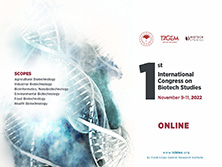Biotech Studies
2016, Vol 25, Num, 2 (Pages: 289-295)
Effect of Climate Change on Poppy (Papaver somniferum L.) Production Area
2 Meteoroloji Genel Müdürlüğü, Ankara
3 Bingöl Üniversitesi, Fen Edebiyat Fakültesi, Moleküler Biyoloji ve Genetik Bölümü, Bingöl DOI : 10.21566/tarbitderg.282851 - The climate is one of the most important factors for continuation of the life in the world and in the distribution of life forms on earth. It also affects distribution and quality of natural and cultivated plants that's grown in the earth. Numerous studies carried out today shows that there is climate change. No doubt, this change will be effective in many agricultural products as well as in poppy production. Poppy (Papaver somniferum L.), best known in human history, is an important industrial plants used for medicinal and oil. In this study, it is intended to determine effects of climate change in future on Turkey's poppy production that is influential country on poppy production and opium alkaloids trade in the world. To this end, temperature and precipitation data (1961-2013) of climate parameters are used. Possible areas where poppy can be grown are shown depending on temperature, rainfall and topography. Temperature and precipitation are modeled with topography; regions are selected for the temperature in range of 7-16°C and for precipitation in range of 300-1000 mm. Intersections of two layers, according to the long-term climatological parameters are determined as Poppy's life region. One of climate change models; HadGEM-2ES RCP8.5 scenario were used to determine changes that may be occurred in the future. Using temperature and precipitation projections for 2015-2040, 2040-2070 and 2070-2099 periods, possible changes are shown in poppy cultivation areas for the future. As a result; it is contemplated that climate change would lead to a decrease in the production of poppy fields in the future and this work will contribute to the determination of the cultivation areas. Keywords : Poppy, climate change, GIS, climate models, HadGEM-2ES
















